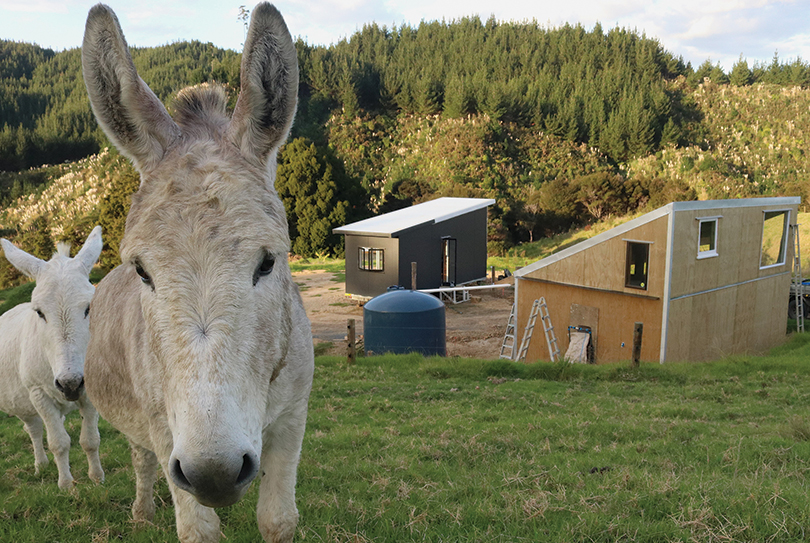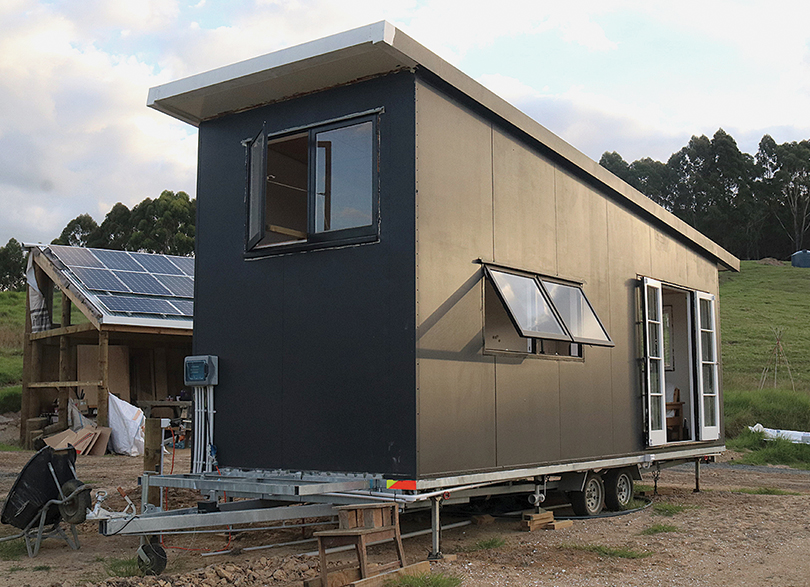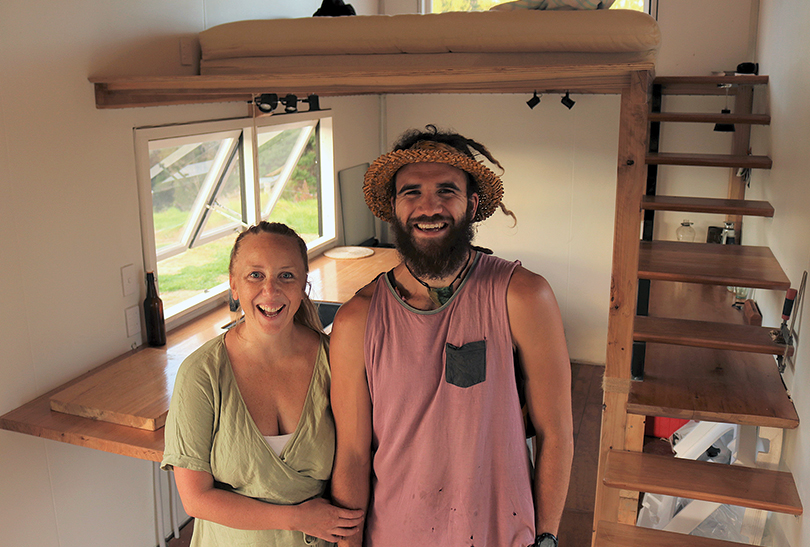Project Whare Paku
Oct 7, 2019


Sitting on the hilltops of Banks Peninsula, dreaming of how we wanted to live our lives together, Jared and I conceived a dream of rangatiratanga. Rangatiratanga over our decisions, rangatiratanga over our kai, rangatiratanga for our whānau and the generations to come. Little did we know that in the years to follow, we would make some bold decisions that would allow this journey to take shape in ways we could have never foreseen.
Within the year we packed our bags, leaving behind the conveniences of urban life – going to the theatre, meeting up with friends, expanding our palate of international foods – and moving home to my ūkaipō. And when I say home, I mean into the room off the verandah of my parents’ Hokianga homestead, down a dirt road in the heart of Northland.
Driven by our passion for being present in the lives of our immediate whānau, we started putting into place what needed to happen to shift our lives toward realising our vision of rangatiratanga. And as we soon found out, the process was not necessarily a seamless or linear one – our story is one of squiggly routes.
The interesting thing with left field decisions such as a home on a trailer is that people think you’re either mad or genius. Luckily for us, anyone who mattered in our lives could see that we were indeed the best of both of these things.
That brings us to our project – appropriately (or inappropriately) named “Project Whare Paku” – a kaupapa that aims to bring together our pursuit of tiny house living and low-impact existence within our taiao. Our mutual love for the environment, whānau, and creativity directed us toward what we saw as a solution to many of the barriers our generation is facing: home ownership, food security, and agency over our decisions. So we took stock of the savings we had hidden away over the years, Jared upskilled in his DIY abilities, and off we went with one thing on our minds: a trailer for our new home! The interesting thing with left field decisions such as a home on a trailer is that people think you’re either mad or genius. Luckily for us, anyone who mattered in our lives could see that we were indeed the best of both of these things.
But as we were to soon find out, our decision to do everything ourselves involved very little glamour. The “measure twice, cut once” mantra soon turned into “research for months, measure a hundred times, cut very slowly, and figure it out as you go”. While I continued to work to ensure we had enough cash flow to balance our outgoings of odd purchases, Jared’s repertoire of building achievements went from a bookshelf to four walls and a roof.

Like any great project there is always a twist, and for the first year we had escaped any drama, complexity, or setbacks. But our twist eventually did arrive. As any parent will know, children take your lives down a multitude of unplanned paths. Finding out we were going to have our first child meant deadlines became more daunting, original plans got morphed, and “tiny” took on a larger definition.
Eight months pregnant, in the heat of a particularly dry Northland summer, we finally moved into our tiny house. It was blissful, with all the things that dreams are made of. Until the broader infrastructural limitations started becoming evident. Not having running water (either for us or our gardens), the novelty of living by candlelight started to dim; and cooking on my old Aoraki Bound cooker limited our repertoire of dishes. It soon became apparent that Project Whare Paku was not simply a housing kaupapa. What we had to create was a mini-world, so that all components of our lives would thrive.
To add to the growing complexity of the project, our whānau of two adults and a growing pēpi expanded with the decision to whāngai two nephews. They came to live with us, adding to the pending tipping point of the human-to-roof ratio. Tiny living just wasn’t going to work … well not just yet, anyway.
So we had to put our pride to one side, yet again, and find some solutions to our DIY reality. Off we went, firstly to our whānau bach by the harbour, to birth our first child; and then back to the room on the verandah with three more humans in tow. Having parents who welcomed us back with open hearts while we took stock of how we had just multiplied is something we will be forever grateful for.

Which lands us to where we are right now: living in an intergenerational household, back in the room off the verandah – Taua, Pōua, Jared, myself, and our allsorts whānau. We’ve spent the year learning how to parent, learning the ins and outs of permaculture, and, when possible, we have snuck in a bit of work on the house and section. Our tiny house project is now a full-flung lifestyle including an off-grid solar set-up, gravity-fed water system, the beginnings of a food forest, and organic kai production that we hope will feed/inspire our whānau, friends, and community. With the tiny house near completion and a few more pieces of the puzzle to find, we are determined to get into our whare by the close of the year.
Our journey toward realising our rangatiratanga has not been a direct route; nor would we want it to be. It has tested our mental, emotional, physical, and spiritual resilience; but has also allowed us the space to deconstruct our perceptions and interactions on a range of levels. It is making us more agile, more in-tune, and a better team; and, although painful at times, will set us up for longevity. To say that we’ve loved this project would be to simplify something that has been profoundly life changing – and something so powerful should never be easy, direct, or obvious. Our reclamation of rangatiratanga is hidden in the darkness of the unknown, in the process of the journey, and the frustration of unlearning and relearning.
A year from now we will be in a very different situation, which is only an exciting idea. Bring on the squiggly routes, the journey, the odd learning – for it just makes us stronger, more resilient, and better at [tiny] living.
Rangimārie Mules descends from Kāti Huirapa ki Puketeraki, Kāi Te Ruahikihiki, Kāi Te Pahi and Kāti Moki. Although she has strong and active links to her Ngāi Tahu whakapapa she was born and raised on the edges of the Hokianga Harbour where she still resides alongside her whānau, her partner and their newborn son Taupae Karaka.